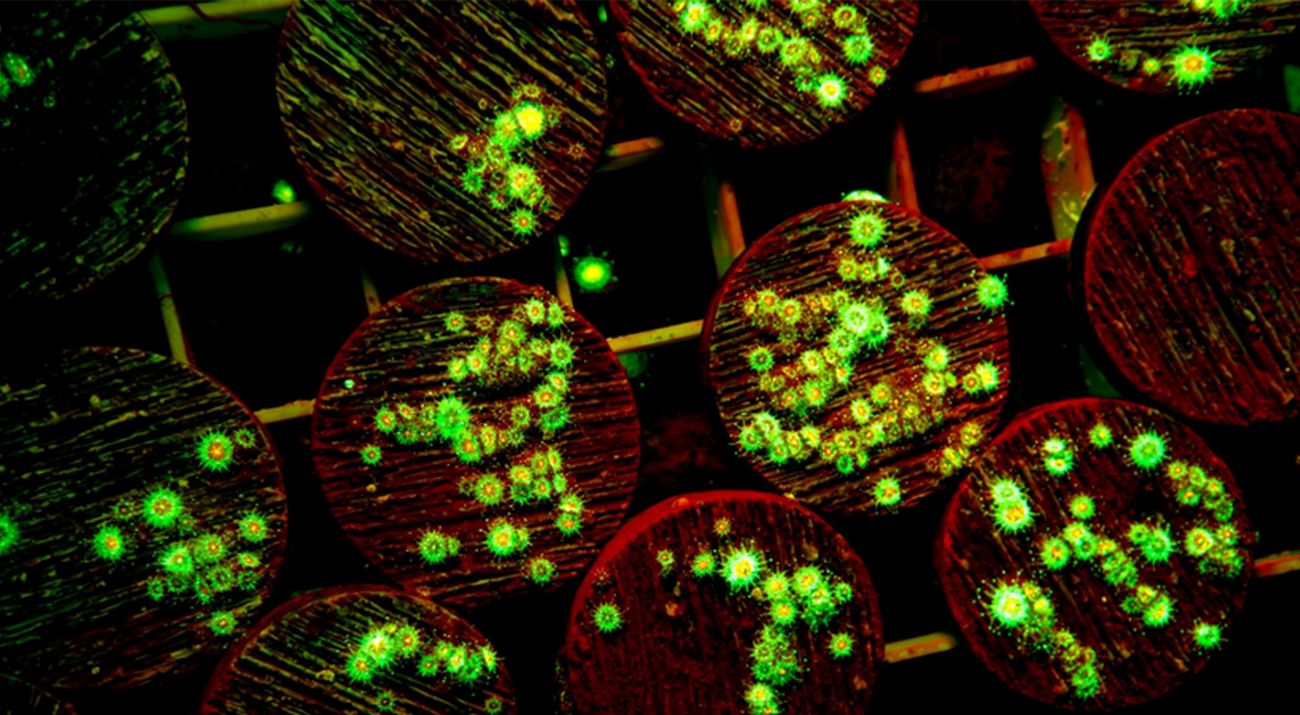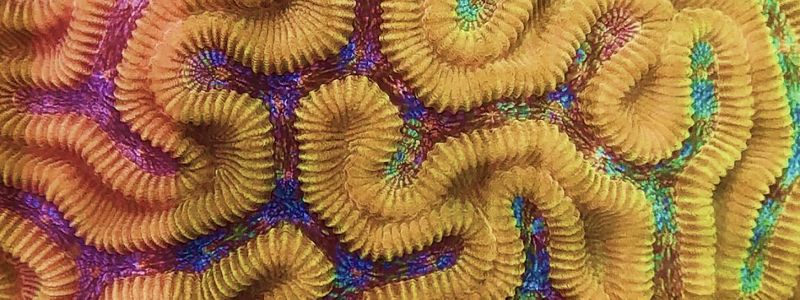
This summer, The Nature Conservancy’s U.S. Virgin Islands Coral Innovation Hub participated in coral spawning events to sexually propagate threatened coral species. After two years of record-breaking global marine heatwaves—which caused widespread coral bleaching and mortality and impacted last summer’s wild spawning, the Hub was eager and well-prepared for this season’s predicted spawning. In fact, the Hub was so well prepared that we managed to propagate an estimated 168,000 new brain corals, as seen in the above image!
With enhanced water chemistry, substrate designs and fertilization methodology, the Hub achieved its highest settlement density (measured by counting the number of settlers per substrate) and recruit survivorship to date. We are rearing recruits across several aquaculture systems designed to evaluate and optimize recruit coral growth, survivorship and health. Our work will yield critical insights into the most effective approaches for long-term recruit rearing, with the goal of outplanting genetically diverse and resilient corals to rebuild degraded reefs.


In addition, the Hub worked with our TNC colleagues in Puerto Rico to coordinate the first sexual propagation learning exchange with their local coral practitioners, including the Department of Natural and Environmental Resources, ISER-Caribe, Sail for Reefs, Florida Sea Grant, HJR Reefscaping and Sea Ventures Marine Response Unit.


Participants engaged in methodology-focused sessions covering the full spectrum of the sexual propagation process—from gamete collection and fertilization techniques to post-settlement monitoring using fluorescence under blue light (figure 2 and figure 3). TNC and participants openly shared resources and methods to enable and encourage other organizations to set up and facilitate their own spawning programs.
We Can’t Save Nature Without You
Sign up to receive monthly conservation news and updates from the Caribbean.
